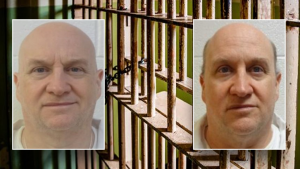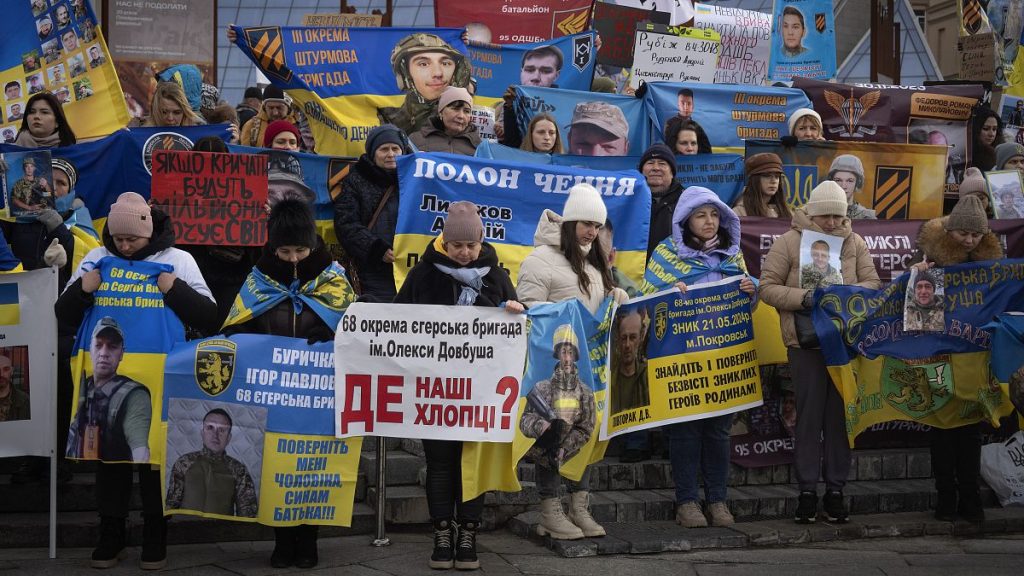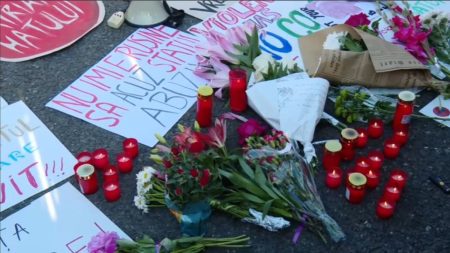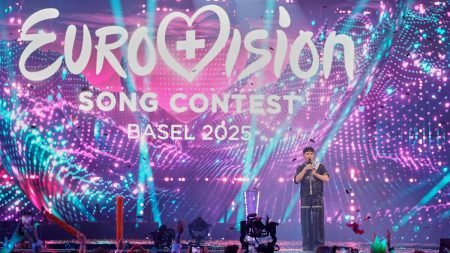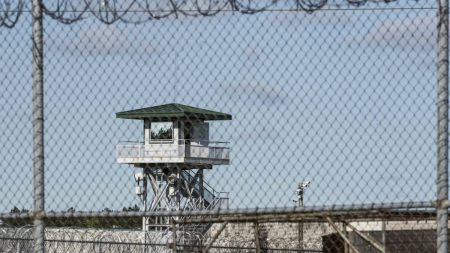The heart of Kyiv pulsed with a mixture of grief, anxiety, and simmering anger as thousands gathered to demand answers from their government. Their loved ones, soldiers who bravely fought against the Russian invasion, had vanished into the fog of war, leaving behind a painful void of uncertainty. The rally resonated with the cries of families desperate for information, desperate for closure, desperate for action. The poignant strains of the Ukrainian national anthem, performed by the Orchestra of the Honour Guard, underscored the weight of their shared loss and the solemn purpose of their gathering. The silence that followed the anthem was a stark reminder of the silence that had become the unwelcome companion of these families, a silence from the battlefield and a silence from the authorities. This demonstration was not an isolated incident, but rather another chapter in the ongoing saga of families grappling with the agonizing unknown, battling a pervasive sense of abandonment by the very government they looked to for support and answers.
The primary grievance of the protesters centered on what they perceived as the government’s inadequate communication and the lack of transparency surrounding the fate of their missing relatives. Stories of unanswered calls, unreturned messages, and vague, unhelpful responses from officials painted a picture of bureaucratic indifference that added insult to the already deep injury of their loss. The wives, mothers, fathers, and children of the missing soldiers felt left in the dark, their pleas for information seemingly falling on deaf ears. Their anguish was amplified by the fear that their loved ones were not simply missing in action, but possibly prisoners of war, languishing in unknown conditions within Russian territory. The demand for greater government action to secure the release of these potential POWs became a rallying cry, a desperate plea to bring their loved ones home.
Adding to the complexity of the situation was the ambiguity surrounding the numbers. While Ukraine had not publicly disclosed the precise number of its soldiers held as POWs by Russia, estimates placed the figure at over 8,000. The broader issue of missing Ukrainians, encompassing both military personnel and civilians, was even more daunting, with estimates reaching nearly 37,000 in April. However, the Ukrainian government acknowledged the difficulty in accurately calculating these figures, suggesting the true number could be significantly higher. This statistical ambiguity only deepened the anguish of the families, each uncertain whether their loved one was among the captured, the missing, or the deceased.
The backdrop to this poignant demonstration was a fresh wave of violence. In the early hours of Saturday morning, Kyiv was jolted awake by the ominous sounds of incoming Russian missiles and drones. The Ukrainian Air Force reported a barrage of 39 Shahed drones, other simulator drones, and four ballistic missiles targeting the capital. While Ukrainian air defenses successfully neutralized two missiles and 24 drones, the attack still inflicted casualties and damage. Three lives were tragically lost, including a security guard at a food establishment and individuals travelling in a minibus. The attack also caused injuries, shattered windows in the Shevchenkivskyi district, and damaged a water supply pipeline. The Lukyanivska metro station briefly closed due to damage to its glass entrance, a stark reminder of the intrusion of war into the everyday lives of Kyiv’s citizens.
The aftermath of the attack saw clean-up operations continuing throughout the day, finally concluding in the evening. This latest assault served as a grim reminder of the ongoing conflict and the ever-present threat looming over the Ukrainian capital. It also underscored the double burden borne by the families of missing soldiers – the agonizing uncertainty surrounding their loved ones’ fate coupled with the constant fear of further attacks and further losses. The missile and drone strikes added another layer of complexity to the prevailing sense of unease and vulnerability that permeated Kyiv.
These incidents – the protest, the missile attack, the ongoing war – collectively paint a picture of a nation grappling with multiple layers of trauma. The families of missing soldiers, caught in a limbo of uncertainty, embody the human cost of war, a cost that extends far beyond the battlefield. Their demand for answers and action is not just a plea for information about their loved ones, but a cry for recognition, for support, and for a sense of closure in a conflict that continues to tear families apart and leave deep scars on the Ukrainian psyche. Their struggle is a testament to the resilience of the human spirit in the face of unimaginable adversity, and a poignant reminder of the urgent need for peace.
